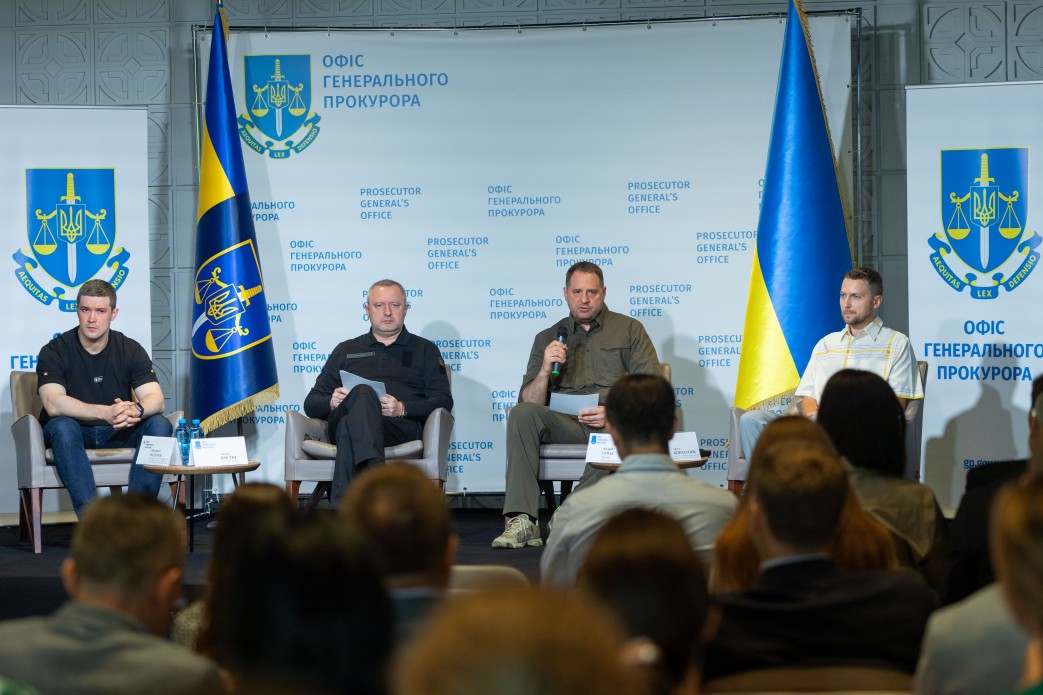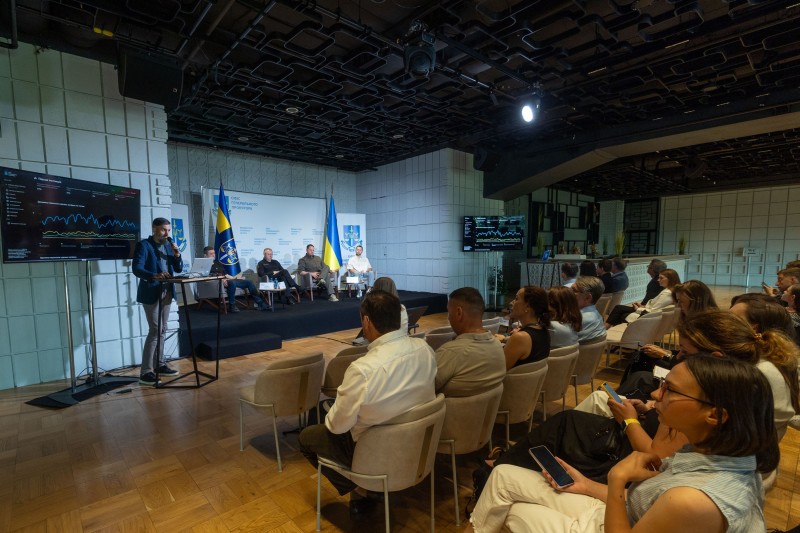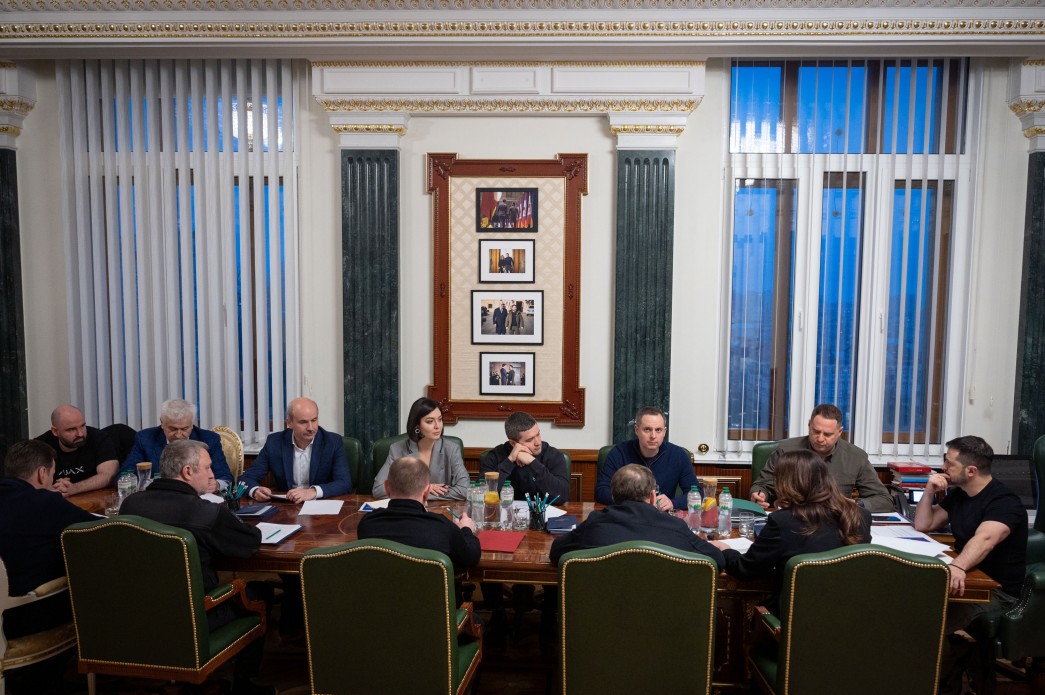"This is a response to the needs of society, to the demands of businesses and investors who want to see fairness and integrity in the work of law enforcement. I am pleased that the discussion about the pressure of regulatory bodies on business will finally be transferred to the realm of numbers and data, rather than social media posts," emphasized the Head of the President's Office.
Why Martial Law Cheapens Ukraine's Democracy
- Atlantic Council
Prosecutor General Andriy Kostin mentioned that more information is planned to be added to the dashboard in the future, and the tool itself will be extended to other types of criminal offenses.
Minister of Digital Transformation Mykhailo Fedorov added that over the coming months, they will study the dashboard's operation and collect user feedback for its improvement.
In January of this year, President Volodymyr Zelenskyy tasked the protection of businesses from potential abuses by law enforcement agencies.
- One of the directions of this work was the development of the URPI dashboard.
The President's Office, the Prosecutor General's Office, the Ministry of Digital Transformation, the Ministry of Justice, the State Judicial Administration, and the Council for Support of Entrepreneurship under the President of Ukraine collaborated on its implementation.
A Dashboard with Information on Proceedings Against Business Was Launched in Ukraine
31 July 2024 - 13:30

Head of the President's Office Andriy Yermak participated in the presentation of a dashboard featuring data from the Unified Register of Pre-trial Investigations regarding proceedings against business.
"The Council for Support of Entrepreneurship under Martial Law was initiated by the President of Ukraine and demonstrates its effectiveness. Today, another product of joint work is being presented – an effective mechanism for enhancing the transparency and efficiency of law enforcement agencies in Ukraine," Andriy Yermak noted.

The dashboard contains data on the number of registered, suspended, resumed, or closed offenses, as well as the number of individuals who were notified of suspicion, subjected to preventive measures, suspended from their positions, the amount of damage caused to the state, and the amount of compensation recovered. Access to it is open to everyone. . ." Ukraine Establishes Council to Support Entrepreneurship During Martial Law, Launches ‘Made in Ukraine’ Economic Platform
by Roman Cheplyk
Monday, January 29, 2024

On January 26, 2024, Ukrainian President Volodymyr Zelenskyy signed Decree No. 30/2024, establishing the Council on Business Support in Martial Law
This advisory body under the President aims to strengthen the collaboration between the state and the business sector under martial law conditions, focusing on preserving and developing entrepreneurial potential.
The Council's primary responsibilities include analyzing the state of entrepreneurship rights under martial law, shaping policies to guarantee these rights, and proposing solutions to address related issues. It is expected to facilitate effective interaction between the state, business entities, public associations, and to share international best practices.
Simultaneously, President Zelenskyy signed Decree No. 31/2024, initiating the All-Ukrainian economic platform
"Made in Ukraine." This platform is designed to foster dialogue and unite efforts of the government and business community to tackle challenges posed by Russia's armed aggression against Ukraine, enhance the activity of Ukrainian producers, and boost the national product’s popularity and marketability. It also aims to improve the investment environment and create economic conditions for Ukraine's economic recovery, modernization, and growth.
The "Made in Ukraine" platform, patronized by the President, will serve as a hub for consistent communication and coordination among state bodies, relocated enterprises, businesses of varying sizes, entrepreneur associations, foreign investors, political figures, scientists, and experts.
The Office of the President, the Cabinet of Ministers, and regional state administrations, in collaboration with entrepreneur associations and experts, are tasked with presenting the platform's concept and structure and ensuring its operational launch within a month.
This development follows the President’s enactment of the National Security and Defense Council's decision on January 23, 2024, regarding immediate measures for economic security during martial law. The NSDC’s recommendation led to the formation of the Council on Business Support in Martial Law.
For more details, visit the official online representation of the President of Ukraine.
Volodymyr Zelenskyy met with representatives of the Council for Support of Entrepreneurship under Martial Law
15 February 2024 - 21:49
President of Ukraine Volodymyr Zelenskyy met with representatives of the Council for Support of Entrepreneurship under Martial Law.
The event was attended by the Council members and government officials, including
- Head of the Presidential Office Andriy Yermak,
- First Deputy Prime Minister – Minister of Economy of Ukraine Yuliia Svyrydenko,
- Deputy Prime Minister for Innovation, Education, Science and Technology Development of Ukraine – Minister of Digital Transformation Mykhailo Fedorov,
- Prosecutor General of Ukraine Andriy Kostin,
- Deputy Head of the Presidential Office Rostyslav Shurma, and
- Advisor to the Head of the Presidential Office Dariia Zarivna.
Volodymyr Zelenskyy noted that he had established the Council to merge the efforts of the state and business towards preserving and developing Ukraine's entrepreneurial potential in the face of Russia's full-scale war against our country."War issues take up almost all of my time. I stand for state institutions helping entrepreneurs. You are now ready to act, you have the energy to focus on these issues. Because this is your life and you know what laws need to be changed, what amendments need to be made, what reforms need to be brought to the parliament.
These are universal issues,"
---
the President said, addressing business representatives.For his part, the Head of the President's Office spoke about the work done together with the Council members. In particular, he noted that pursuant to the President's instruction, the Council had conducted a series of meetings and come up with a list of the most pressing issues to be resolved. . .
Particular attention was paid to the introduction of digital solutions to modernize the interaction between the state and business, namely, the creation of a platform for receiving feedback from business and an analytical module for the Unified Register of Pre-trial Investigations, which will allow to see the full picture of criminal proceedings in the country in real time.
- The digital platform is expected to facilitate feedback between the government and businesses – regional, small, and medium-sized – and to provide insight and an opportunity to systematize the issues that are of primary concern to entrepreneurs and identify ways to improve the business environment.
- For each of the issues discussed, the parties outlined an action plan and ways for business to participate in developing systemic, concrete solutions with the involvement of the Council for Support of Entrepreneurship under Martial Law, a wide range of businessmen, and the Made in Ukraine platform.
The entrepreneurs thanked the President and other government officials for the constructive dialog.- He noted that it is impossible to win this war without the bravery of our warriors, without a robust defense industry, without the help of our allies, and without powerful Ukrainian entrepreneurs.
"We consider this work a great trust and a great responsibility. And our duty and sincere desire is to help the country. Together we want to create a country where businessmen are respected. Especially those who pay taxes and do not break the law. They should feel respect, appreciation and support," added Oleh Horokhovskyi.















